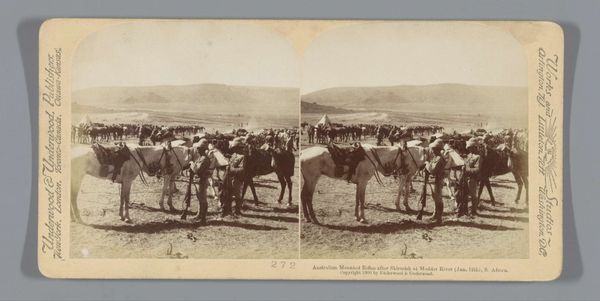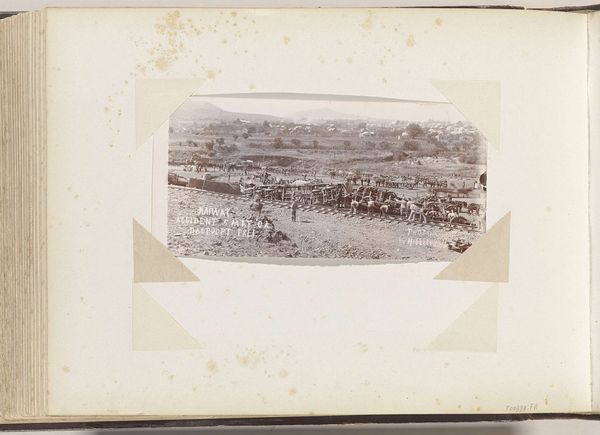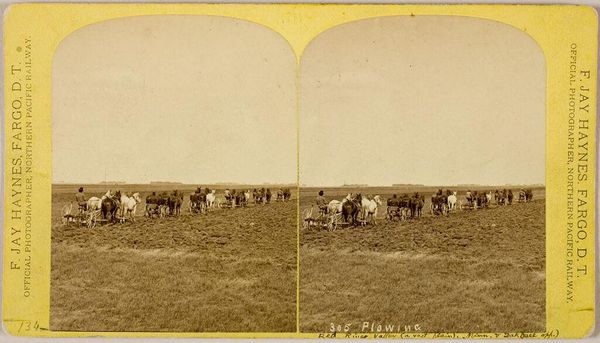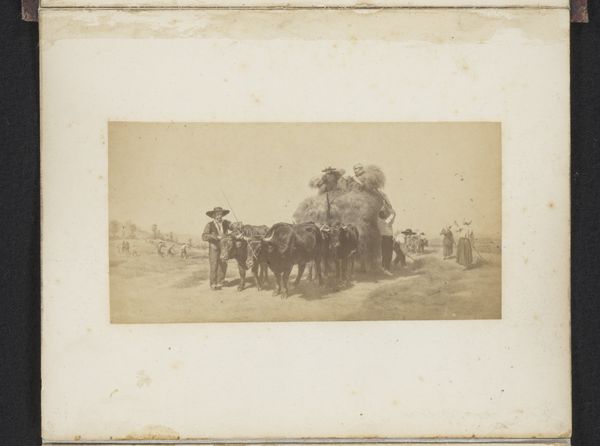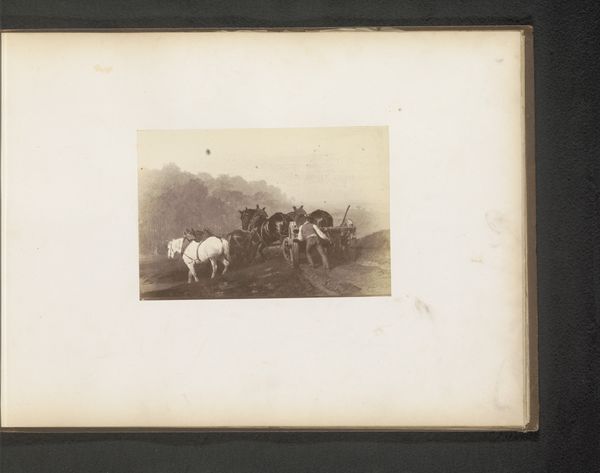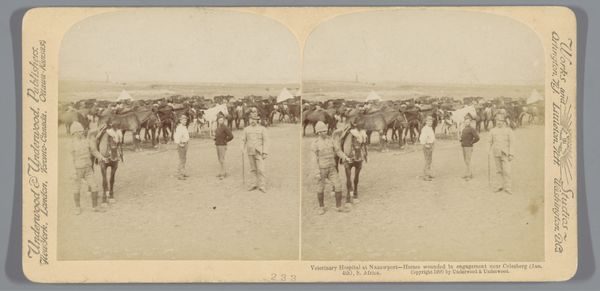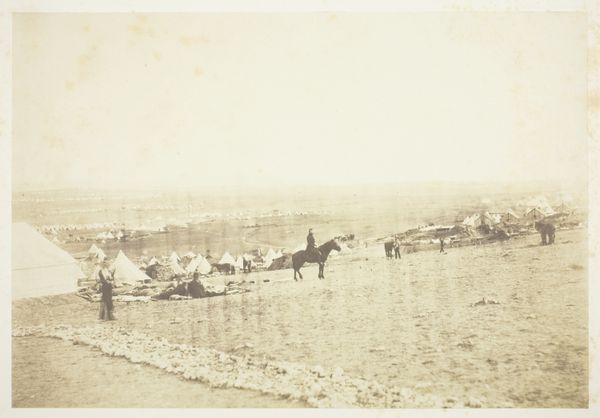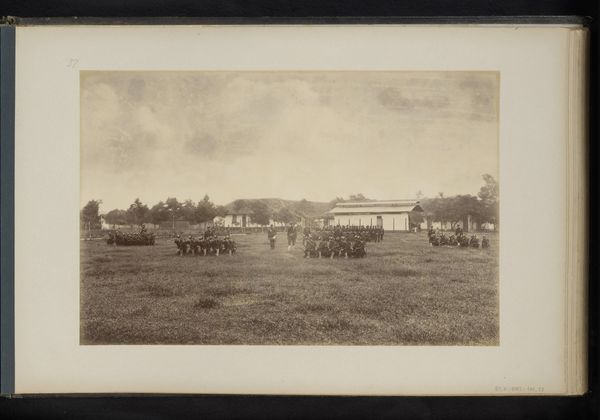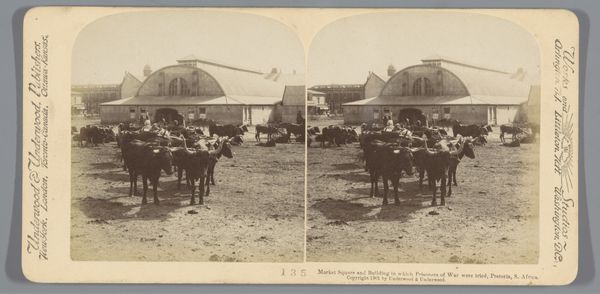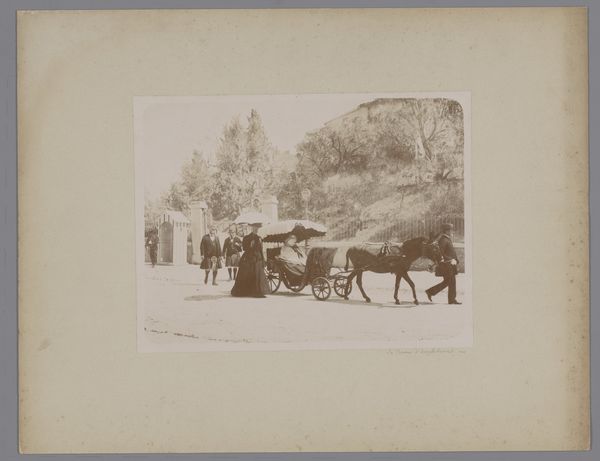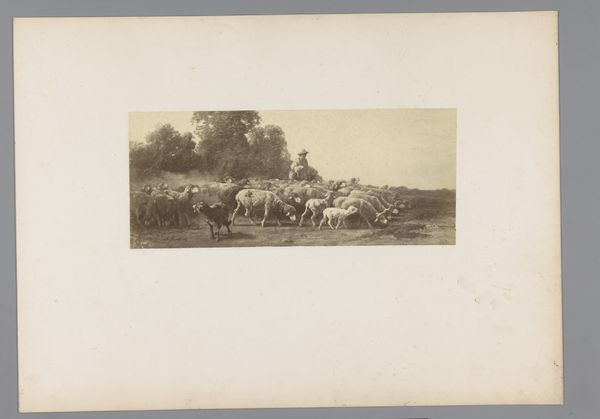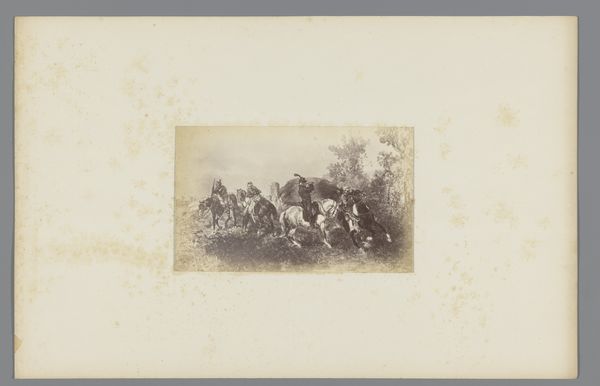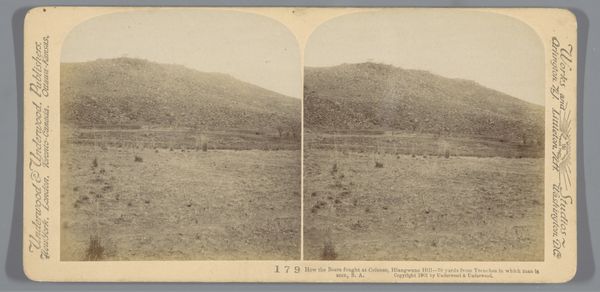
photography, albumen-print
#
landscape
#
photography
#
history-painting
#
albumen-print
#
realism
Dimensions: height 86 mm, width 175 mm
Copyright: Rijks Museum: Open Domain
Curator: Welcome. Here we have an albumen print from 1868, a stereoscopic image created by William Henry Jackson entitled "Three Stagecoaches on the Road from Uintah to Salt Lake City." Editor: Immediately, I'm struck by its muted tones—the entire scene bathed in sepia, lends an air of historical remove but also intense nostalgia. It gives an old west and adventure feeling. Curator: Indeed. Jackson, who operated his photography studio in Omaha, meticulously documented the westward expansion during this period, not as a detached observer, but as a key participant and surveyor. Note the composition; how the receding parallel lines converge, creating a vanishing point just behind the stagecoaches, structuring the gaze. Editor: The social history here is also palpable. These coaches are symbols of a very specific period of westward movement, facilitated by technologies of transportation and communication and the decimation of the Native population and their lands. One is placed between the three Stagecoaches and looking toward the camera direction which could mean how the stagecoach and expansion is looked at from a personal level. Curator: Precisely, but observe how Jackson transforms mere documentation into art, primarily through arrangement and subtle manipulation of light and shadow, creating tonal contrasts between figures, wagons and the Utah terrain to make the subjects pop. Consider how that formal manipulation amplifies certain aspects of expansion—the grit, but also the excitement and a dreamlike quality to progress. Editor: I see a clear example of Jackson attempting to mythologize that idea of progress through manifest destiny. What Jackson leaves out is equally important. What and who is out of frame—the dispossessed, the ecological damage, or exploitation are essentially erased, making a case for a carefully constructed American narrative. Curator: It certainly brings to light how every image becomes a narrative decision. Examining elements in relation to their contexts and how the relationship plays into the narrative allows us to truly decode this artwork's complexities and assumptions. Editor: Indeed, understanding how history intersects with technique shapes the legacies and receptions of images, revealing inherent ideologies often obscured within aesthetic enjoyment.
Comments
No comments
Be the first to comment and join the conversation on the ultimate creative platform.
